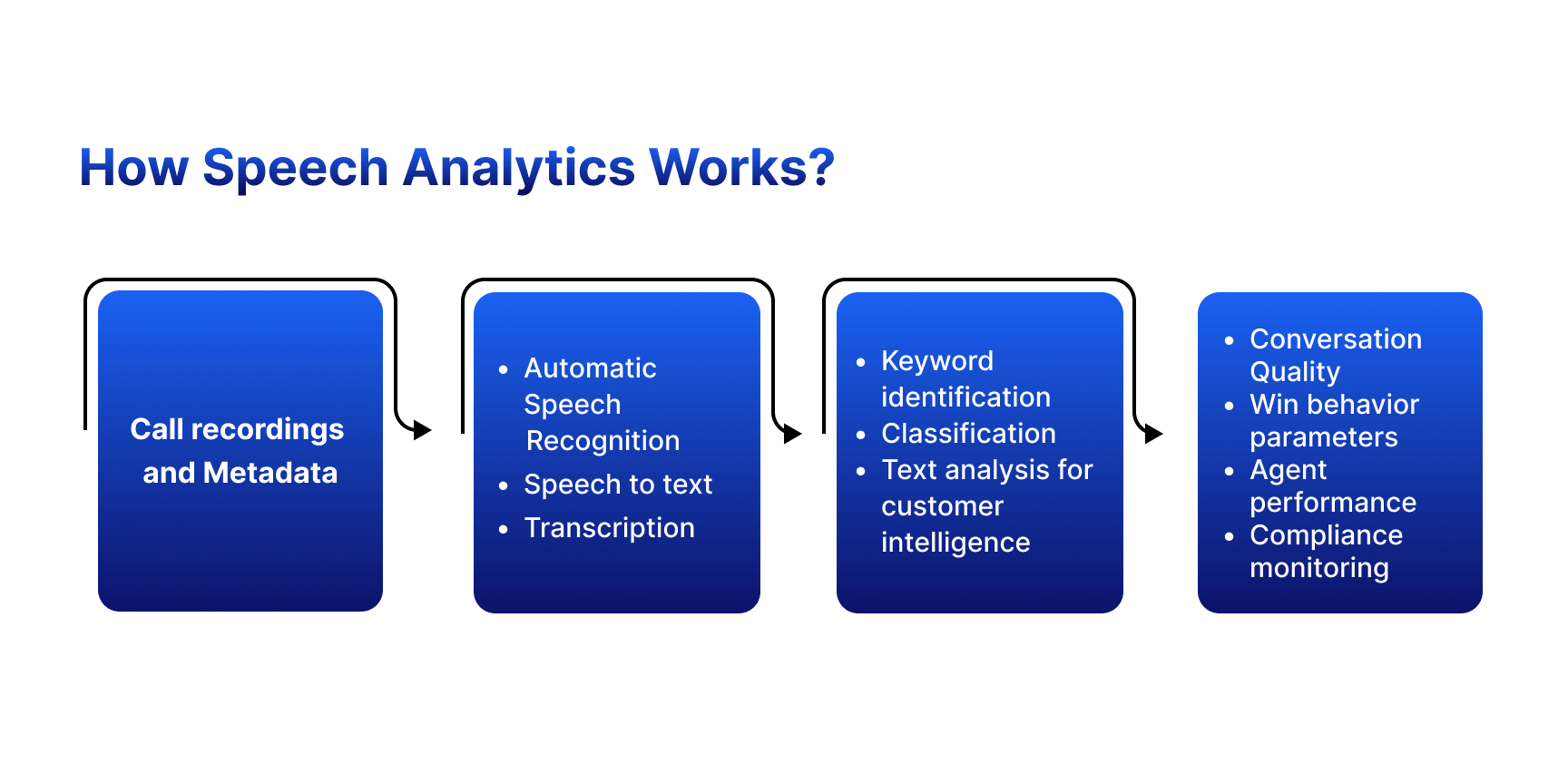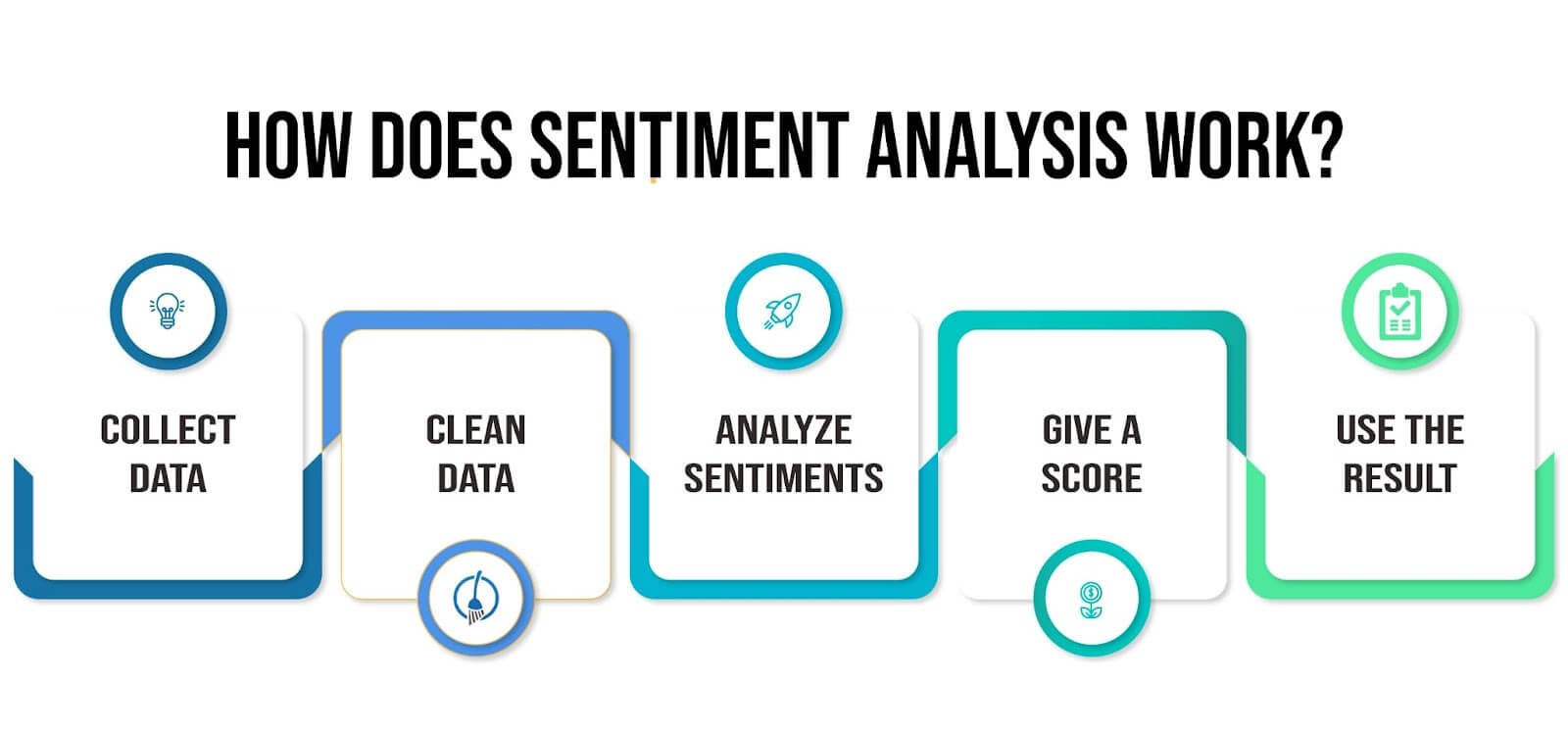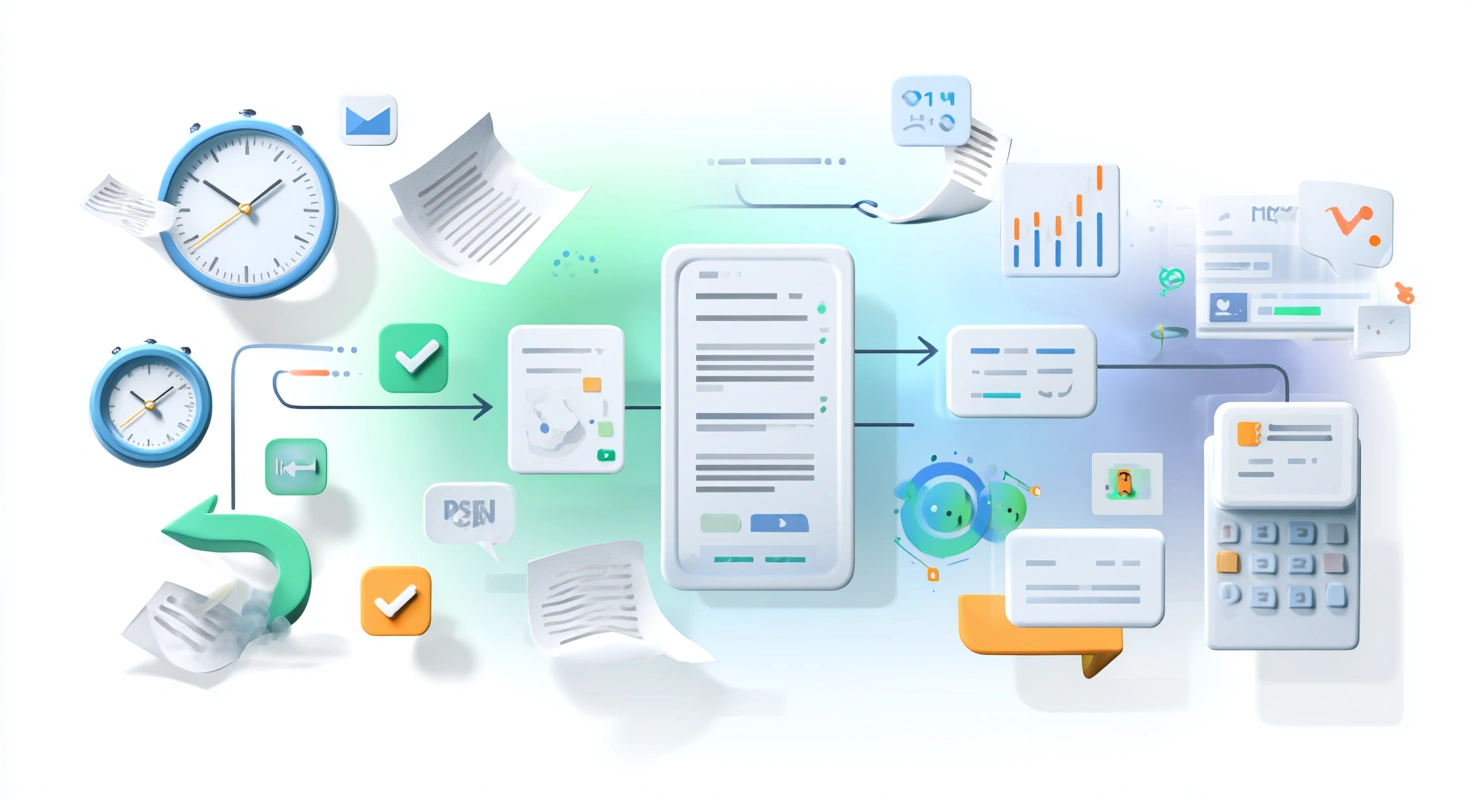In the dynamic world of customer service, understanding what the customer wants is the holy grail of success. To provide a seamless and satisfying customer experience, it's essential to grasp the intricacies of customer needs. In today's digital age, the concept of an omnichannel customer experience has become paramount, requiring organizations to adapt and evolve to meet customers where they are across various channels.
In this blog, we will delve into the world of customer needs, how to understand them, and the benefits of doing so in a call center setting, focusing on the pivotal role that AI plays in enhancing the omnichannel experience.
Find out how Convin helps you understand your customer better.
What Are Customer Needs?
Customer needs in the context of an omnichannel experience are multifaceted and encompass a wide range of expectations and requirements that customers have when engaging with a brand seamlessly across various channels.
1. Consistency Across Channels
- Omnichannel Experience: Customers expect a consistent brand image, messaging, and service quality across all the channels they interact with, whether it's a physical store, website, mobile app, social media, or call center.
- Omnichannel Customer Experience: They desire a unified and cohesive experience where the transition between channels is smooth, ensuring that their preferences and information are seamlessly carried over.
2. Accessibility and Convenience
- Omnichannel Experiences: Customers need convenience in accessing information and making purchases. They expect to engage with a brand at their preferred time and place.
- Omnichannel-Customer Experience: The convenience extends to easy navigation, quick access to product/service details, and the ability to switch channels without starting interactions from scratch.
3. Personalization and Relevance
- Customer Experience + Omnichannel: Customers increasingly seek personalized interactions where their previous history, preferences, and behaviors are acknowledged and used to tailor recommendations and communication.
- Omnichannel Customer Experience: The omnichannel approach allows for the integration of data from various touchpoints to provide a more relevant and personalized experience, which is a critical customer need in today's market.
4. Efficiency and Timeliness
- Omnichannel Customer Experience: Customers expect efficient and timely responses to their inquiries or issues, regardless of the channel they choose.
- Omnichannel Experiences: Meeting this need involves minimizing wait times, resolving problems swiftly, and providing accurate information promptly.
5. Trust and Security
- Omnichannel Experience: Trust is paramount in an omnichannel environment. Customers need to feel secure in sharing their data and transactions across multiple channels.
- Customer Experience + Omnichannel: Brands must address security concerns comprehensively and communicate their commitment to protecting customer information to meet this need effectively.
6. Seamless Communication and Integration
- Omnichannel Customer Experience: Customers demand that different channels work seamlessly together, enabling them to start an interaction on one channel and continue it on another without repetition or confusion.
- Omnichannel Experiences: This involves integrating back-end systems to ensure that customer data and preferences are synchronized across all touchpoints, facilitating a cohesive journey.
7. Feedback and Resolution
- Omnichannel-Customer Experience: Customers require a consistent process for providing feedback and seeking resolutions. They expect their concerns to be addressed promptly, irrespective of the channel they use.
- Customer Experience + Omnichannel: Brands should actively seek and act upon customer feedback from all channels to continuously improve their offerings and service quality.
8. Empathy and Human Touch
- Omnichannel Experiences: Despite the digital nature of many channels, customers still appreciate a human touch. They want agents to understand their emotions and concerns, whether it's through a chat window or a face-to-face interaction in a physical store.
- Omnichannel Customer Experience: Meeting this need involves training agents to display empathy and emotional intelligence across all communication channels.
In the world of omnichannel customer experience, understanding these intricate customer needs and aligning your strategies and technology to fulfill them is essential for creating lasting relationships, building brand loyalty, and driving business success.
It's essential to bridge the gap between theory and practical application. Let's delve into the actionable steps and strategies that can help organizations truly grasp and cater to their customers' ever-evolving needs.
How to Understand Customer Needs?
Understanding customer needs within the context of an omnichannel experience is crucial for providing a seamless and satisfying customer journey. Here, we'll delve into the details of how to understand customer needs, with a particular focus on the omnichannel aspect.
1. Collect and Centralize Data
To understand customer needs in an omnichannel environment, start by collecting data from all available touchpoints. It includes customer interactions across various channels such as social media, email, phone, chat, and in-person interactions. Centralizing this data into a single repository ensures that you have a holistic view of each customer's journey.
2. Customer Surveys and Feedback
Actively seek feedback from customers. Surveys, comment cards, and online reviews are valuable sources of information. Encourage customers to share their experiences and preferences, especially related to their omnichannel experiences.
3. Social Media Listening
Monitor social media platforms for mentions of your brand. Customers often share their experiences, complaints, and suggestions on social media. Engaging with these conversations can provide insights into customer needs and sentiments.
4. Customer Journey Mapping
Create detailed customer journey maps that track the touchpoints and interactions a customer has with your brand across channels. This visual representation helps in identifying pain points and areas where customer needs may not be met.
5. AI and Predictive Analytics
Implement AI-powered tools and predictive analytics to analyze customer behavior. These technologies can identify patterns and predict future needs, enabling you to address customer requirements in the omnichannel context proactively.
6. Segmentation and Personalization
Segment your customer base based on demographics, behavior, and preferences. It allows you to tailor your omnichannel experiences to different customer needs. Personalization can significantly enhance customer satisfaction.
7. Real-time Monitoring
Monitor customer interactions in real time. It is especially crucial in an omnichannel environment where customers expect immediate responses. Real-time monitoring allows you to address issues promptly and adapt to changing customer needs.
8. Cross-functional Collaboration
Promote collaboration between departments within your organization. In an omnichannel setup, different teams (marketing, sales, customer support, etc.) must work together to share insights and ensure a consistent customer experience.
9. Regular Data Analysis and Iteration
Customer needs are not static; they evolve. Regularly analyze the data, gather feedback, and adjust your omnichannel strategies accordingly. Stay agile and responsive to changing customer preferences.
Incorporating these strategies into your approach to understanding customer needs in an omnichannel environment will help you deliver exceptional customer experiences that align with the ever-evolving expectations of today's consumers.
Now that we've explored the fundamentals of understanding customer needs, let's delve into the innovative realm of harnessing AI technology to empower call center agents in their quest to comprehend better and cater to those very needs.
This blog is just the start.
Unlock the power of Convin’s AI with a live demo.

How Can Call Center Agents Understand Customer Needs Using AI?
Understanding and meeting customer needs in the context of an omnichannel experience is crucial for call center agents. AI plays a pivotal role in helping agents achieve this, enabling them to provide a seamless and personalized service.
1. Data Integration Across Channels
AI-enabled systems can aggregate and integrate data from various customer touchpoints, such as emails, chat, social media, and phone calls. It ensures that agents have a holistic view of the customer's history and interactions across different channels.
For instance, if a customer initially inquires via email and follows up with a call, the agent can access the email thread and continue the conversation seamlessly. This integration is fundamental to delivering an authentic omnichannel experience.
2. Customer Profiling and Segmentation
AI algorithms can analyze customer data to create detailed profiles and segments based on behaviors, preferences, and demographics. Agents can then use this information to tailor their interactions. For example, if AI identifies a customer as a frequent online shopper, the agent can proactively suggest relevant products or promotions during a phone call.
3. Real-time Insights
AI-powered tools provide real-time insights during customer interactions. As agents engage with customers, AI algorithms can analyze the conversation in real-time, identifying sentiment, urgency, and specific needs. For instance, if a customer expresses frustration, the AI system can alert the agent to address the issue promptly and empathetically.

4. Predictive Analytics
AI-driven predictive analytics can anticipate customer needs. By analyzing historical data and behavior patterns, AI can make recommendations to agents. For instance, if a customer has a history of purchasing certain accessories for a product, AI can suggest these add-ons to the agent, enhancing upselling and cross-selling opportunities.
5. Chatbots and Virtual Assistants
Chatbots and virtual assistants are AI-driven tools that handle routine inquiries and tasks. In an omnichannel environment, these bots can interact with customers on multiple platforms, including websites, social media, and messaging apps. When necessary, they can seamlessly transfer the conversation to a human agent, providing context and history to ensure a smooth transition.
6. Automated Routing
AI can automatically route incoming inquiries to the most suitable agent based on factors like skill set, language proficiency, and historical interactions. It ensures that customers are directed to the agent who is best equipped to address their specific needs, enhancing efficiency and satisfaction.
7. Feedback Analysis
AI can analyze customer feedback, both positive and negative, from various sources, including surveys, social media, and review platforms. This analysis helps agents understand the pain points and preferences of customers across different channels. Agents can then proactively address these issues and adapt their approach to meet customer expectations.
8. Continuous Learning
AI-powered systems learn and adapt over time. They can identify trends and changes in customer behavior, allowing agents to stay ahead of evolving customer needs. This adaptability is essential in the fast-paced world of customer service, especially within an omnichannel context where customer preferences can change rapidly.
By harnessing the power of AI, call centers can deliver exceptional customer experiences that drive loyalty and satisfaction across all channels.
Having explored how AI empowers call center agents to understand customer needs, let's now delve into the valuable benefits of this understanding within a call center environment.
What are The Benefits of Understanding Customer Needs in a Call Center?
Understanding customer needs in a call center is paramount to delivering a superior omnichannel customer experience. It not only benefits the customers themselves but also has a significant impact on call center agents and the overall organization.
1. Agent Level
a. Enhanced Customer Interactions
Call center agents who have a deep understanding of customer needs can engage in more meaningful and productive conversations. They can address customer concerns more effectively and tailor their responses to meet specific requirements in an omnichannel context.
b. Increased Empathy
With insights into customer needs, agents can empathize better with customers, showing genuine concern for their issues and providing personalized assistance. This empathetic approach can lead to a more positive customer interaction.

c. Reduced Stress
When agents understand customer needs, they are better equipped to handle queries and resolve issues promptly. It can reduce stress levels among agents, as they feel more confident in their ability to assist customers effectively.
d. Higher Job Satisfaction
Agents who consistently meet customer needs and receive positive feedback are likely to experience greater job satisfaction. It, in turn, can contribute to lower agent turnover rates, as contented agents are more likely to stay with the organization.
2. Organization Level
a. Improved Customer Loyalty
Understanding and meeting customer needs consistently across various channels in an omnichannel experience fosters customer loyalty. Satisfied customers are more likely to remain loyal to the organization, reducing customer churn.
b. Enhanced Brand Reputation
Organizations that excel in understanding and fulfilling customer needs earn a positive reputation. Word-of-mouth recommendations and online reviews play a significant role in shaping the brand's image, which can lead to increased customer acquisition.
c. Efficient Resource Allocation
By analyzing customer needs and preferences, organizations can allocate resources more efficiently. They can prioritize areas that matter most to customers, optimizing processes and reducing unnecessary expenses.
d. Data-driven decision-making
Insights into customer needs provide valuable data that organizations can use for data-driven decision-making. It allows them to adapt strategies and offerings to better align with customer expectations in an omnichannel environment.
3. Customer Level
a. Satisfying Experiences
The ultimate benefit of understanding customer needs is the creation of satisfying and delightful customer experiences. Customers receive products, services, and support that cater to their specific requirements, resulting in higher levels of satisfaction.
b. Consistency Across Channels
In an omnichannel experience, customers expect consistency across all touchpoints. When their needs are understood and met consistently, they can seamlessly switch between channels without encountering disparities or disruptions.
c. Personalization
Understanding customer needs enables organizations to offer personalized recommendations and solutions. Customers appreciate the feeling of being recognized and valued, leading to a stronger emotional connection with the brand.
d. Efficiency and Convenience
Customers benefit from more efficient and convenient interactions when their needs are understood. Quick problem resolution, relevant information, and tailored solutions save them time and effort.
Understanding customer needs in a call center is not just about satisfying immediate requests; it's about creating enduring relationships and delivering a seamless omnichannel customer experience.
At the agent level, this translates into improved interactions and agent satisfaction.
At the organizational level, it results in loyalty, efficiency, and a positive reputation.
At the customer level, it leads to satisfying, consistent, and personalized experiences, ultimately driving success in the realm of customer service in the context of an omnichannel experience.
Let Convin Help You Capture Customer Needs Better!
Convin offers innovative products and solutions designed to assist call centers in understanding their customer needs and improving overall customer service. Here's an in-depth look at how Convin can help call centers achieve these goals:
1. Automated Call Transcription
- Convin's product can automatically transcribe customer calls, converting spoken words into text. This transcription capability is highly beneficial as it allows for a comprehensive record of every conversation.
- Transcriptions make it easier for call center agents to review and analyze customer interactions, ensuring that they don't miss critical information.

2. Sentiment Analysis
- Convin employs sentiment analysis algorithms to determine the emotional tone of customer conversations. It can identify whether a customer is satisfied, frustrated, or neutral during the call.
- Sentiment analysis provides valuable insights into customer emotions, allowing call center agents to respond more empathetically and address concerns promptly.

3. Quality Assurance and Training
- Call center supervisors can use Convin to assess the quality of agent interactions by reviewing transcriptions and sentiment analysis.
- This product can also assist in agent training by providing real-life examples of practical and less effective customer interactions, helping agents refine their skills.
4. Omnichannel Integration
- Convin ensures that its products seamlessly integrate with various communication channels, including phone calls, live chats, emails, and social media.
- This enables call centers to gain a holistic view of customer interactions across all touchpoints, enhancing the omnichannel customer experience.
5. Conversation Behaviour Analysis
- Convin’s, Conversation Behavior Analysis is a tool that uses advanced AI and NLP techniques to analyze and evaluate the behavior and effectiveness of conversations between call center agents and customers. This analysis helps organizations improve customer interactions, enhance agent performance, and ensure that conversations align with company objectives and standards.
Convin's products empower call centers to understand their customer needs comprehensively by providing automated call transcription, sentiment analysis, keyword recognition, analytics, and more.
With their versatile capabilities, call centers can enhance their operations, agent performance, and customer satisfaction, all while embracing the principles of an omnichannel customer experience.
Curious Enough? Get on a call with us to know more.
FAQ
1. What is an omnichannel example?
A customer starts shopping online, adds items to their cart, visits a physical store to try on products, and then completes the purchase via a mobile app, seamlessly transitioning between online and offline channels.
2. What is an example of an omni-channel customer experience?
A customer receives personalized product recommendations through email, explores them on a mobile app, asks questions through live chat, purchases on a website, tracks the order on social media, and returns the item hassle-free in-store, enjoying a consistent and convenient experience across channels.
3. How do you deliver an omnichannel experience?
To deliver an omnichannel experience, integrate all customer touchpoints (online, offline, mobile, social) into a unified ecosystem, share data across channels, and ensure consistent messaging, service, and personalization.
4. What is the best practice for omnichannel experience?
Prioritize seamless customer journeys, maintain a single customer view, invest in data analytics for insights, provide consistent branding, and offer flexible fulfillment options (e.g., buy online, pick up in-store).
5. What are the three core omnichannel strategies?
- Integration: Seamlessly connect all channels and data for a unified customer experience.
- Personalization: Tailor interactions based on customer preferences and history.
- Consistency: Ensure a consistent brand message, pricing, and service across channels.
6. What are the 7 C's of omnichannel?
- Consistency: Maintain a uniform brand message and service quality.
- Convenience: Make shopping and communication effortless for customers.
- Customization: Tailor experiences to individual preferences.
- Connection: Create seamless transitions between channels.
- Context: Understand the context of customer interactions.
- Collaboration: Foster teamwork among departments for a unified approach.
- Community: Build a sense of belonging and engagement among customers.








.avif)